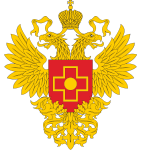
This article is an open access article distributed under the terms and conditions of the Creative Commons Attribution license (CC BY).
ORIGINAL RESEARCH
Interaction of cationic antiseptics with cardiolipin-containing model bacterial membranes
1 Federal Scientific and Clinical Center of Specialized Medical Care and Medical Technology of FMBA, Moscow, Russia
2 Lomonosov Moscow State University, Moscow, Russia
Correspondence should be addressed: Ilya B. Kovalenko
Orekhovyi bulvar, 28, Moscow, 115682; moc.liamg@87oknelavoki
Funding: the research was carried out with the financial support of the Russian Foundation for Basic Research (project № 19-34-90045) and the State assignment "The influence of the lipid composition of bacterial membranes on the processes of interaction with antimicrobial compounds" (code: "Membrane").
Author contribution: Kholina EG — constructing molecular models of studied substances, calculations, manuscript writing; Bozdaganyan ME — calculations, manuscript writing; Strakhovskaya MG — study concept, manuscript writing, analysis of the results; Kovalenko IB — study concept, building a computing infrastructure, manuscript writing, analysis of the results.
- Denyer SP, Hugo WB. Biocide-induced damage to the bacterial cyctoplasmic membrane. Soc Appl Bacteriol Tech Ser. 1991; 27: 171–87.
- Kroll RG, Patchett RA. Biocide-induced perturbations of aspects of cell homeostasis : intracellular pH, membrane potential and solute transport. Soc Appl Bacteriol Tech Ser. 1991; 27: 189–202.
- Russell AD, Hugo WB. Perturbation of homeostatic mechanisms in bacteria by pharmaceuticals. In: Whittenbury R, Gould GW, Banks JG, Board RG, editors. Homeostatic mechanisms in microorganisms. Bath University Press, Bath, England. 1988; р. 206–19.
- Fuller SJ. Biocide-induced enzyme inhibition. Soc Appl Bacteriol Tech Ser. 1991; 27: 235–49.
- Kuyyakanond T, Quesnel LB. The mechanism of action of chlorhexidine. FEMS Microbiol Lett Oxford Academic. 1992; 100 (1–3): 211–15.
- Cheung, HY, Wong MM, Cheung SH, Liang LY, Lam YW, Chiu SK. Differential actions of chlorhexidine on the cell wall of Bacillus subtilis and Escherichia coli. PLoS One. 2012; 7 (5): e36659.
- Strakhovskaya MG, Khalatyan AS, Budzinskaya MV, Kholina EG, Kolyshkina NA, Kovalenko IB, Zhukhovitsky VG. Chuvstvitel'nost' antibiotikorezistentnyh koagulazonegativnyh stafilokokkov k antiseptiku pikloksidinu. Klinicheskaja praktika. 2020; 11 (1): 42–48. Russian.
- Gilbert P, Moore LE. Cationic antiseptics: diversity of action under a common epithet. J Appl Microbiol. 2005; 99 (4): 703–15.
- Dolgushin FM, Goloveshkin AS, Ananyev IV, Osintseva SV, Torubaev YV, Krylov SS, et al. Interplay of noncovalent interactions in antiseptic quaternary ammonium surfactant Miramistin. Acta Crystallogr Sect C International Union of Crystallography (IUCr). 2019; 75 (4): 402–11.
- Vereshchagin AN, Frolov NA, Egorova KS, Seitkalieva MM, Ananikov VP. Quaternary Ammonium Compounds (QACs) and Ionic Liquids (ILs) as Biocides: From Simple Antiseptics to Tunable Antimicrobials. Int J Mol Sci. 2021; 22 (13): 67–93.
- Van Oosten B, Marquardt D, Komljenović I, Bradshaw JP, Sternin E, Harroun TA. Small molecule interaction with lipid bilayers: a molecular dynamics study of chlorhexidine. J Mol Graph Model. 2014; 48: 96–104.
- Amsterdam D, Ostrov BE. Disinfectants and antiseptics: Modes of action, mechanisms of resistance, and testing regimens. Antibiotics in Laboratory Medicine. Wolters Kluwer Health Adis (ESP), 2014; p. 1135–230.
- Lin TY, Weibel DB. Organization and function of anionic phospholipids in bacteria. Appl Microbiol Biotechnol. 2016; 100 (10): 4255–67.
- Epand RM, Epand RF. Bacterial membrane lipids in the action of antimicrobial agents. J Pept Sci. 2011; 17 (5): 298–305.
- Matsumoto K, Kusaka J, Nishibori A, Hara H. Lipid domains in bacterial membranes. Mol Microbiol. 2006; 61 (5): 1110–17.
- Strahl H, Errington J. Bacterial Membranes: Structure, Domains, and Function. Annu Rev Microbiol. 2017; 71: 519–38.
- Mileykovskaya E, Dowhan W. Cardiolipin membrane domains in prokaryotes and eukaryotes. Biochim Biophys Acta — Biomembr. Elsevier B.V. 2009; 1788 (10): 2084–91.
- Romantsov T, Battle AR, Hendel JL, Martinac B, Wood JM. Protein localization in Escherichia coli cells: comparison of the cytoplasmic membrane proteins ProP, LacY, ProW, AqpZ, MscS, and MscL. Journal of bacteriology. 2010; 192 (4): 912–24.
- Camberg JL, Johnson TL, Patrick M, Abendroth J, Hol WG, Sandkvist M. Synergistic stimulation of EpsE ATP hydrolysis by EpsL and acidic phospholipids. The EMBO journal. 2007; 26 (1): 19–27.
- Kholina EG, Kovalenko IB, Bozdaganyan ME, Strakhovskaya MG, Orekhov PS. Cationic antiseptics facilitate pore formation in model bacterial membranes. The Journal of Physical Chemistry B. 2020; 124 (39): 8593–600.
- Qi Y, Ingуlfsson HI, Cheng X, Lee J, Marrink SJ, Im W. CHARMMGUI martini maker for coarse-grained simulations with the martini force field. Journal of chemical theory and computation. 2015; 11 (9): 4486–94.
- Marrink SJ, Risselada HJ, Yefimov S, Tieleman DP, De Vries AH, et al. The MARTINI Force Field: Coarse Grained Model for Biomolecular Simulations. J Phys Chem B. 2007; 111 (27): 7812–24.
- Abraham MJ, Murtola T, Schulz R, Pall S, Smith JC, Hess B, et al. GROMACS: High performance molecular simulations through multi-level parallelism from laptops to supercomputers. Software X. 2015; 1: 19–25.
- Yesylevskyy SO, Schäfer LV, Sengupta D, Marrink SJ. Polarizable water model for the coarse-grained MARTINI force field. PLoS computational biology. 2010; 6 (6): e1000810.
- Singer SJ, Nicolson GL. The Fluid Mosaic Model of the Structure of Cell Membranes. Science. 1972; 175 (4023): 720–31.
- Macháň R, Hof M. Lipid diffusion in planar membranes investigated by fluorescence correlation spectroscopy. Biochimica et Biophysica Acta (BBA)-Biomembranes. 2010; 1798 (7): 1377–91.
- Moradi S, Nowroozi A, Shahlaei M. Shedding light on the structural properties of lipid bilayers using molecular dynamics simulation: a review study. RSC Adv. The Royal Society of Chemistry. 2019: 9 (8): 4644–58.
- John T, Thomas T, Abel B, Wood BR, Chalmers DK, Martin LL. How kanamycin A interacts with bacterial and mammalian mimetic membranes. Biochimica et Biophysica Acta (BBA)Biomembranes. 2017; 1859 (11): 2242–52.
- Berglund NA, Piggot TJ, Jefferies D, Sessions RB, Bond PJ, Khalid S. Interaction of the antimicrobial peptide polymyxin B1 with both membranes of E. coli: a molecular dynamics study. PLoS computational biology. 2005; 11 (4): e1004180.
- Malanovic N, Ön A, Pabst G, Zellner A, Lohner K. Octenidine: Novel insights into the detailed killing mechanism of Gramnegative bacteria at a cellular and molecular level. Int J Antimicrob Agents. 2020; 56 (5): 106146.